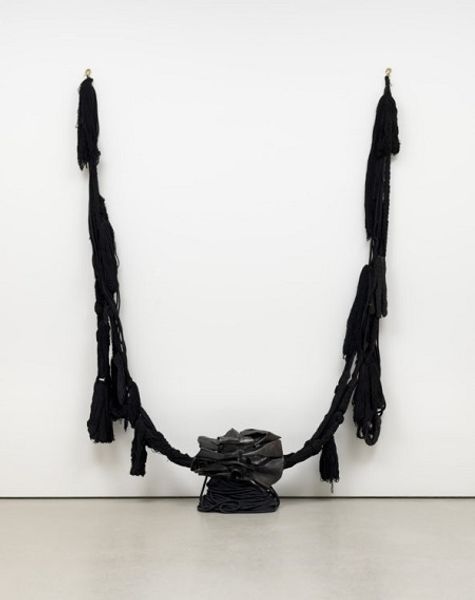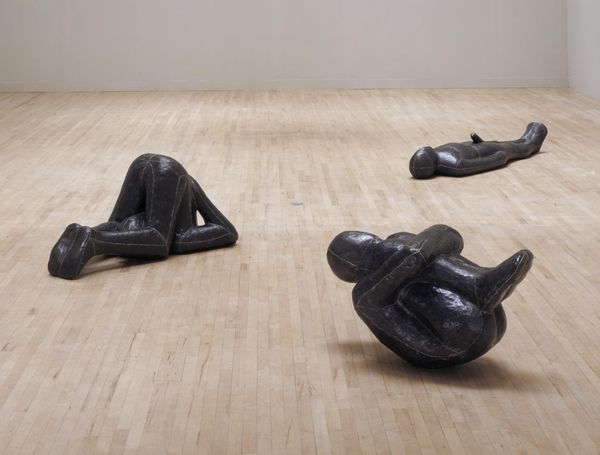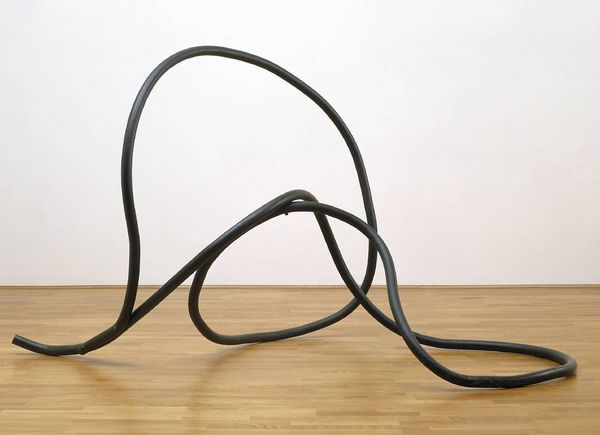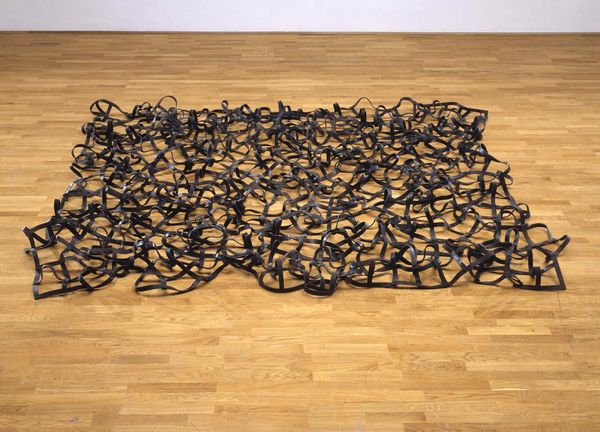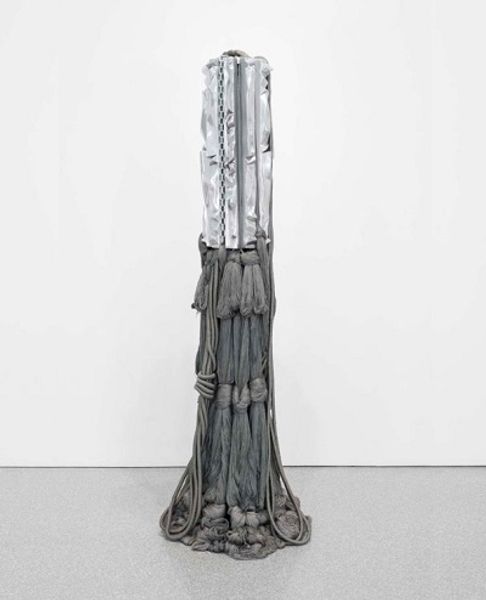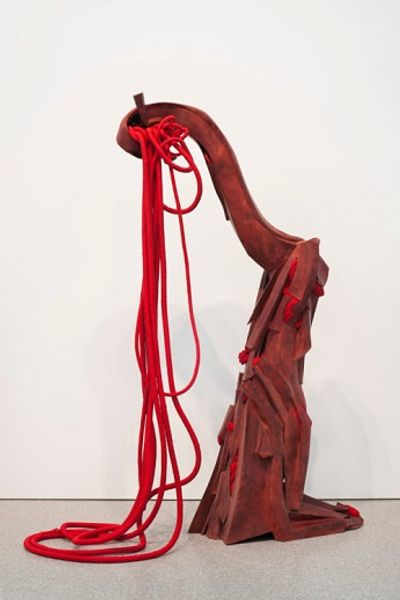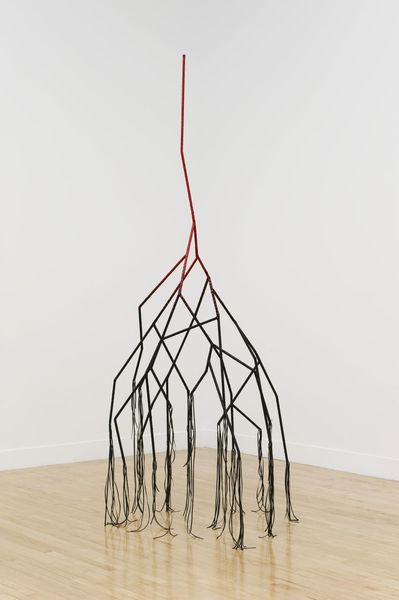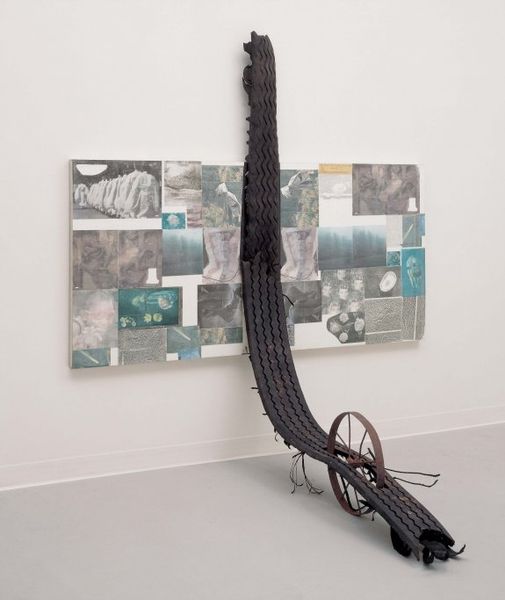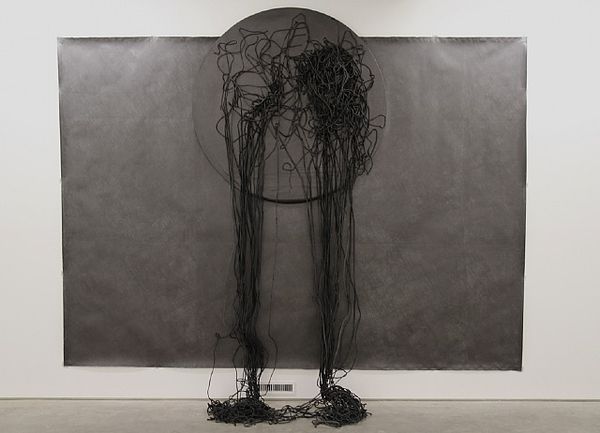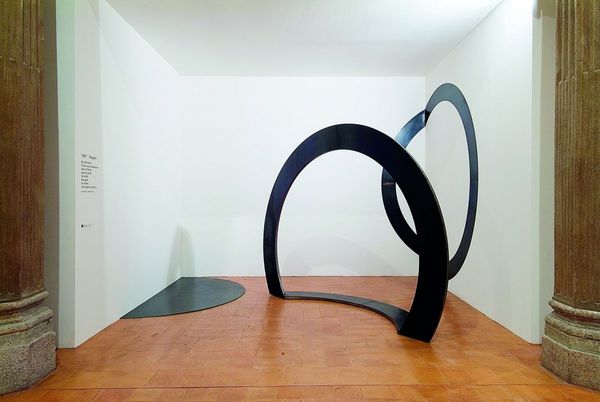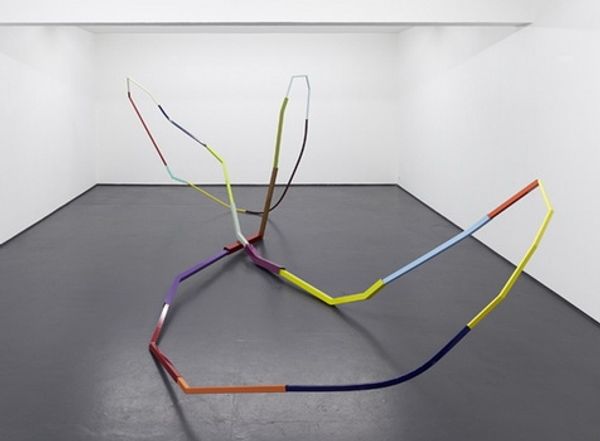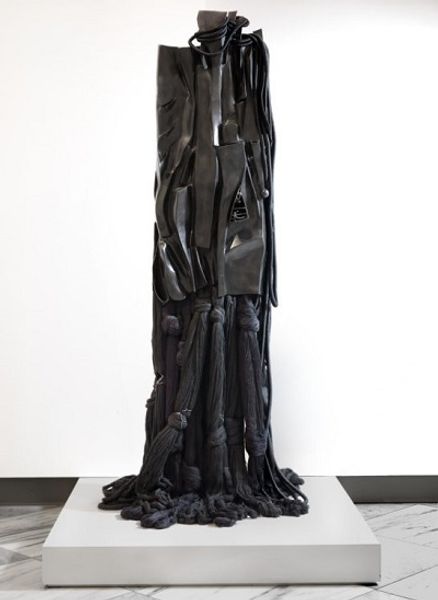
Dimensions: Overall display dimensions variable
Copyright: © Nicholas Hlobo, courtesy Stevenson Gallery, Cape Town | CC-BY-NC-ND 4.0 DEED, Photo: Tate
Curator: Nicholas Hlobo’s mixed media sculpture "Balindile I" definitely has a disquieting presence. Editor: Absolutely. It's dark, almost mournful. The rubber evokes a sense of constraint, a feeling of something being bound or silenced. Curator: Hlobo’s use of rubber, often combined with lace and ribbon, explores themes of cultural identity and sexuality within the context of post-apartheid South Africa. The materials themselves speak to industry and the body. Editor: The textures are striking, too. The harshness of the rubber against what appears to be delicate, almost hair-like tendrils—it's a study in contrasts. You can feel the labor in this. Curator: Considering Hlobo’s Xhosa heritage, the work brings to mind questions of ritual and the negotiation of tradition in contemporary society. How do we reconcile our histories with present realities? Editor: For me, it's the sheer physicality of the work. It's grounded, almost industrial in its presence. Curator: A powerful convergence of material and meaning. Editor: Indeed. "Balindile I" offers a tactile experience, inviting us to consider the weight of history and the labor of art.
Comments
Join the conversation
Join millions of artists and users on Artera today and experience the ultimate creative platform.
tate 6 months ago
⋮
Balindile I is titled in Hlobo’s native language Xhosa, a Nguni language widely spoken in South Africa. Translated as ‘those in waiting’, it refers to the black rubber form that appears to be rising up, in a state of limbo. The rubber is from the inner tube of a car tyre, gathered from repair shops in Johannesburg. The hosepipe appears to be acting as a tether, limiting movement. It could also represent an umbilical cord, signifying growth and possibility. Gallery label, August 2019
